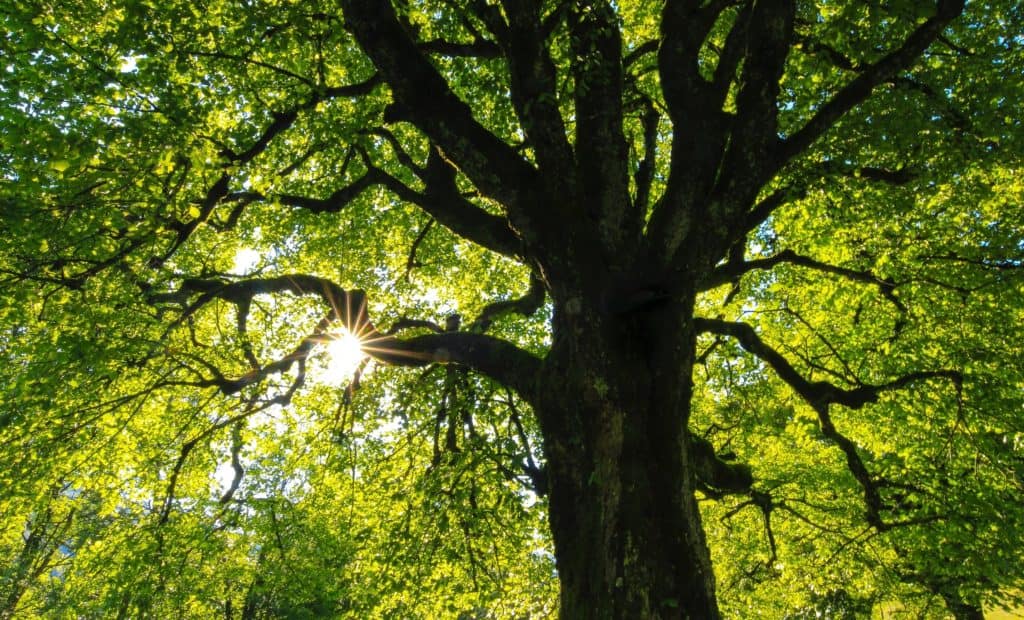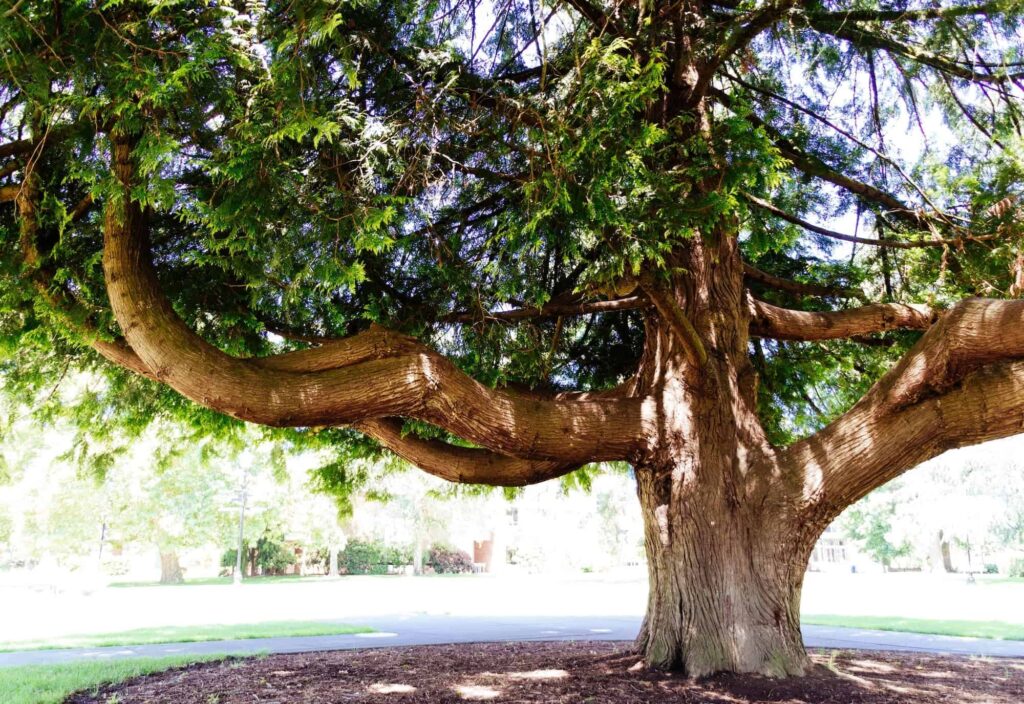By: Shelby McCullough| Published: July 13, 2024
Trees are an essential part of our environment, contributing to the beauty of our landscapes, providing shade, and supporting local ecosystems. However, trees can sometimes be affected by various natural elements, one of which is moss. While moss might seem harmless, it can actually pose significant risks to the health of trees. In this blog post, we will explore the benefits of removing moss from trees, highlighting how this practice can promote tree health, enhance safety, and improve the overall appearance of your landscape.

Understanding Moss and Its Impact on Trees
What is Moss?
Moss is a small, non-vascular plant that typically forms dense green clumps or mats in shady, moist environments. While it can add a touch of charm to forest floors and rocks, its presence on trees can be problematic.
How Does Moss Affect Trees?
Moss on trees can lead to several issues:
- Weight and Structural Stress: Large amounts of moss can add considerable weight to tree branches, potentially leading to breakage, especially during storms.
- Reduced Sunlight: Moss can cover leaves and branches, blocking sunlight necessary for photosynthesis, thereby weakening the tree.
- Moisture Retention: Moss retains moisture, which can create an environment conducive to fungal growth and rot.

The Benefits of Removing Moss
1. Promotes Tree Health
Removing moss helps trees stay healthy by:
- Increasing Sunlight Exposure: By clearing moss, you allow more sunlight to reach the leaves, which is essential for photosynthesis and overall tree vitality.
- Reducing Fungal Growth: Moss can trap moisture against the bark, creating a perfect environment for fungi. Removing moss helps to keep the bark dry and free from rot.
2. Enhances Safety
Trees laden with moss can pose safety risks:
- Prevents Branch Breakage: The added weight of moss can cause branches to break, which is hazardous, especially during storms or high winds.
- Reduces Slip Hazards: Moss-covered paths and areas beneath trees can become slippery and dangerous. Keeping moss under control can help maintain safer walkways.
3. Improves Aesthetic Appeal
Moss can make trees and landscapes look unkempt:
- Maintains Tree Appearance: Removing moss helps trees look cleaner and healthier, enhancing the overall beauty of your landscape.
- Boosts Property Value: A well-maintained landscape with healthy, moss-free trees can increase the aesthetic appeal and value of your property.

Steps to Remove Moss from Trees
1. Manual Removal
- Using a Soft Brush: Gently scrub the moss off the tree bark with a soft brush to avoid damaging the tree.
- Pruning: Trim any branches that are heavily covered with moss to reduce the spread and weight.
2. Chemical Treatments
- Moss Killers: There are commercial moss killers available that can be applied to trees. These should be used carefully to avoid harming the tree.
- Natural Solutions: A mixture of water and baking soda can be an effective and eco-friendly way to kill moss.
3. Regular Maintenance
- Regular Inspections: Frequently check your trees for new moss growth, especially after rainy seasons.
- Proper Tree Care: Ensure your trees are healthy and well-maintained to reduce the likelihood of moss growth.

FAQs about Removing Moss from Trees
What is the best time to remove moss from trees?
The best time to remove moss is during the dry season when the moss is less hydrated and easier to remove. Regular inspections and maintenance should be carried out year-round.
Can moss harm my tree?
Yes, while moss itself is not a parasite, it can cause indirect damage by retaining moisture and adding weight, leading to increased risks of fungal infections and branch breakage.
How often should moss be removed from trees?
This depends on the climate and the amount of moss growth. In moist environments, it might be necessary to check and remove moss more frequently, such as every few months.
Are there natural ways to prevent moss growth?
Maintaining tree health through proper pruning, ensuring good air circulation, and keeping the tree’s environment less humid can help prevent moss growth naturally.
Can I remove moss from my trees myself?
Yes, moss can be removed manually using a soft brush or through safe chemical treatments. However, if the moss is extensive or if you are unsure about the process, it is advisable to seek professional help.
Conclusion
Removing moss from trees is crucial for maintaining their health, ensuring safety, and enhancing the beauty of your landscape. By understanding the impact of moss and taking proactive steps to manage it, you can enjoy the benefits of healthier, more robust trees. Regular maintenance and professional tree care services can help keep your trees in top condition, allowing them to thrive and continue to enhance your environment for years to come. If you have concerns about moss on your trees, consider consulting a certified arborist to develop an effective moss management strategy.

